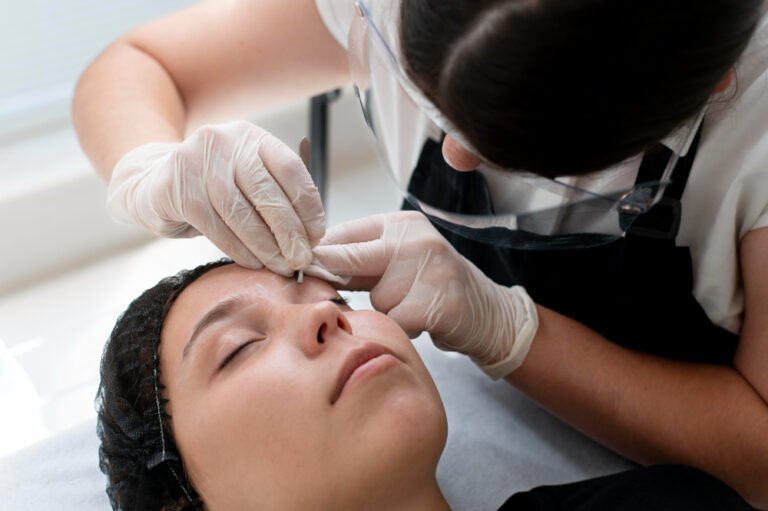Insights from Korean Clinics
Pigmentation problems — such as sun spots, melasma, freckles, and post-inflammatory hyperpigmentation — are common skin concerns that many patients seek to improve using advanced laser technology. Korea, as a global aesthetic hub, leads in the development and application of Pico laser treatments for pigmentation with remarkable results.
One of the most frequently asked questions by patients is:
“How many Pico laser sessions will I need to see clear results?”
Here’s what Korean dermatologists and clinics advise, based on clinical experience and patient outcomes in 2025.
🔬 Understanding Pigmentation and Treatment Response
Pigmentation can be caused by various factors, including UV damage, hormonal changes, inflammation, or genetics. Each type responds differently to laser treatment, and so does every individual’s skin type.
Korean clinics emphasize that treatment plans are highly personalized, but there are general guidelines:
| Pigmentation Type | Typical Number of Pico Laser Sessions | Interval Between Sessions | Expected Outcome Timeline |
|---|---|---|---|
| Freckles / Solar Lentigines | 1–3 | 2–4 weeks | Noticeable lightening after 1st; major clearing by 3rd session |
| Sunspots / Age Spots | 2–4 | 3–4 weeks | Gradual pigment fading with sessions; full clearance around 3rd or 4th |
| Melasma | 4–6 | 4 weeks | Melasma is chronic; sessions combined with topical care; gradual improvement over months |
| Post-inflammatory Hyperpigmentation (PIH) | 2–5 | 3–4 weeks | Depending on cause; sessions break down pigment safely |
| Tattoo Pigmentation Removal | 6+ | 4–6 weeks | More sessions needed for ink breakdown |
🧴 Why Multiple Sessions Are Necessary
- Pigment Fragmentation: Pico lasers deliver ultra-short pulses that fragment pigment into tiny particles. The body then naturally eliminates these fragments over time.
- Gradual Clearance: Pigmentation is often deep or widespread; a single session may only partially clear the pigment.
- Skin Healing: Adequate intervals (usually 2–4 weeks) allow skin healing and pigment clearance between sessions.
- Avoiding Side Effects: Too frequent or aggressive treatment can cause irritation or worsen pigmentation, especially in darker skin tones common in Korea.
📋 Korean Clinics’ Typical Protocol for Pigmentation Removal
- Initial Consultation and Skin Analysis:
Using devices like VISIA or OBSERV, the dermatologist assesses pigment depth and skin type to customize treatment. - First Pico Laser Session:
Targeting visible spots and testing skin’s response. - Follow-up Sessions (Usually 2–6):
- Lighter pigmentation may require fewer sessions.
- Persistent or deeper pigment (melasma) requires more treatments plus adjunct topical or oral therapies.
- Maintenance Sessions:
To prevent recurrence, occasional maintenance sessions every 6–12 months may be recommended.
🕒 How Long Does It Take to See Results?
- Immediate Effects: Some patients notice a “frosting” or slight lightening immediately post-treatment.
- 2 Weeks Post-Treatment: Pigment begins to darken briefly as it rises to the skin surface before flaking off.
- After 3–4 Sessions: Significant reduction in pigmentation is typically observed.
- Long-Term: For conditions like melasma, ongoing care is necessary to maintain results.
👩⚕️ Korean Dermatologists’ Recommendations
- Patience is Key: Don’t expect total clearance after one session.
- Sun Protection: Strict UV protection is vital before, during, and after treatments to prevent pigment recurrence.
- Adjunct Treatments: Many clinics combine Pico laser with topical brightening agents or chemical peels to optimize outcomes.
- Personalized Plan: Treatment plans are tailored to each patient’s skin response and pigmentation severity.
💡 Summary Table
| Pigmentation Type | Sessions Needed | Treatment Interval | Additional Care |
|---|---|---|---|
| Freckles / Sunspots | 1–4 | 2–4 weeks | Sunscreen + topical brighteners |
| Melasma | 4–6+ | 4 weeks | Topicals + possible oral meds |
| Post-inflammatory Hyperpigmentation (PIH) | 2–5 | 3–4 weeks | Avoid irritation + sun care |
🏥 Final Advice for Patients Considering Pico Laser in Korea
- Choose clinics with board-certified dermatologists experienced in pigmentation.
- Expect a course of treatments rather than a single “quick fix.”
- Be consistent with aftercare and sun protection for lasting results.
- Discuss any skin sensitivity or previous treatments with your doctor for personalized planning.




